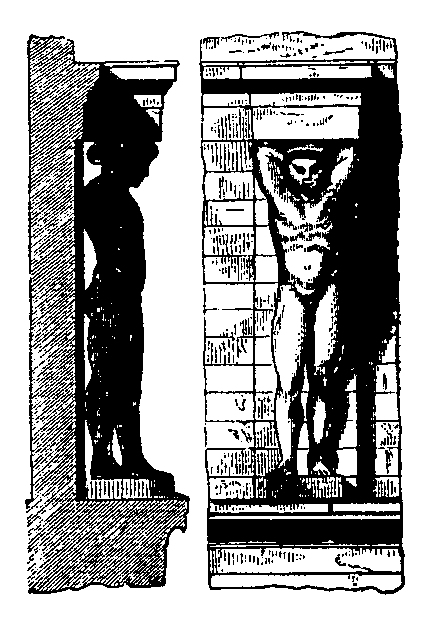|
Dictionary: Search the Dictionary Browse the Dictionary |
|
Timeline: Launch Interactive Timeline |
| Return to Front Page |
| ATLAS | |
| Form: the "bearer" or "endurer". | |
| The son of the Titan Iapetus and Clymene (or, according to anotlier account, Asia), brother of Menoetius, Prometheus, and Epimetheus. In Homer [Od. i. 52] he is called "the thinker of mischief," who knows the depths of the whole sea, and has under his care the pillars which hold heaven and earth asunder. In Hesiod [Theog. 517] he stands at the western end of the earth, near where the Hesperides dwell, holding the broad heaven on his head and unwearied hands. To this condition he is forced by Zeus, according to a later version as a punishment for the part which he took in the battle with the Titans. By the Ocean nymph Pleione he is father of the Pleiades, by Aethra of the Hyades. In Homer the nymph Calypso is also his daughter, who dwells on the island Ogygia, the navel of the sea. Later authors make him the father of the Hesperides, by Hesperis. It is to him that Amphitrite flies when pursued by Poseidon. As their knowledge of the West extended the Greeks transferred the abode of Atlas to the African mountain of the same name. Local stories of a mountain which supported the heaven would, no doubt, encourage the identification. In later times Atlas was represented as a wealthy king, and owner of the garden of the Hesperides. Perseus, with his head of Medusa, turned him into a rocky mountain for his inhospitality. In works of art he is represented as carrying the heaven; or (after the earth was discovered to be spherical), the terrestrial globe. Among the statues of Atlas the Farnese, in the Museum at Naples, is the best known. (See also |
|
|
|
|
| Pictures and Media | |
| ATLAS (HESTORED).(From the temple of Zeus at Agrigentum.) |

|
|
Copyright 2000-2020 Peter T. Struck. No portion of this site may be copied or reproduced, electronically or otherwise, without the expressed, written consent of the author. |